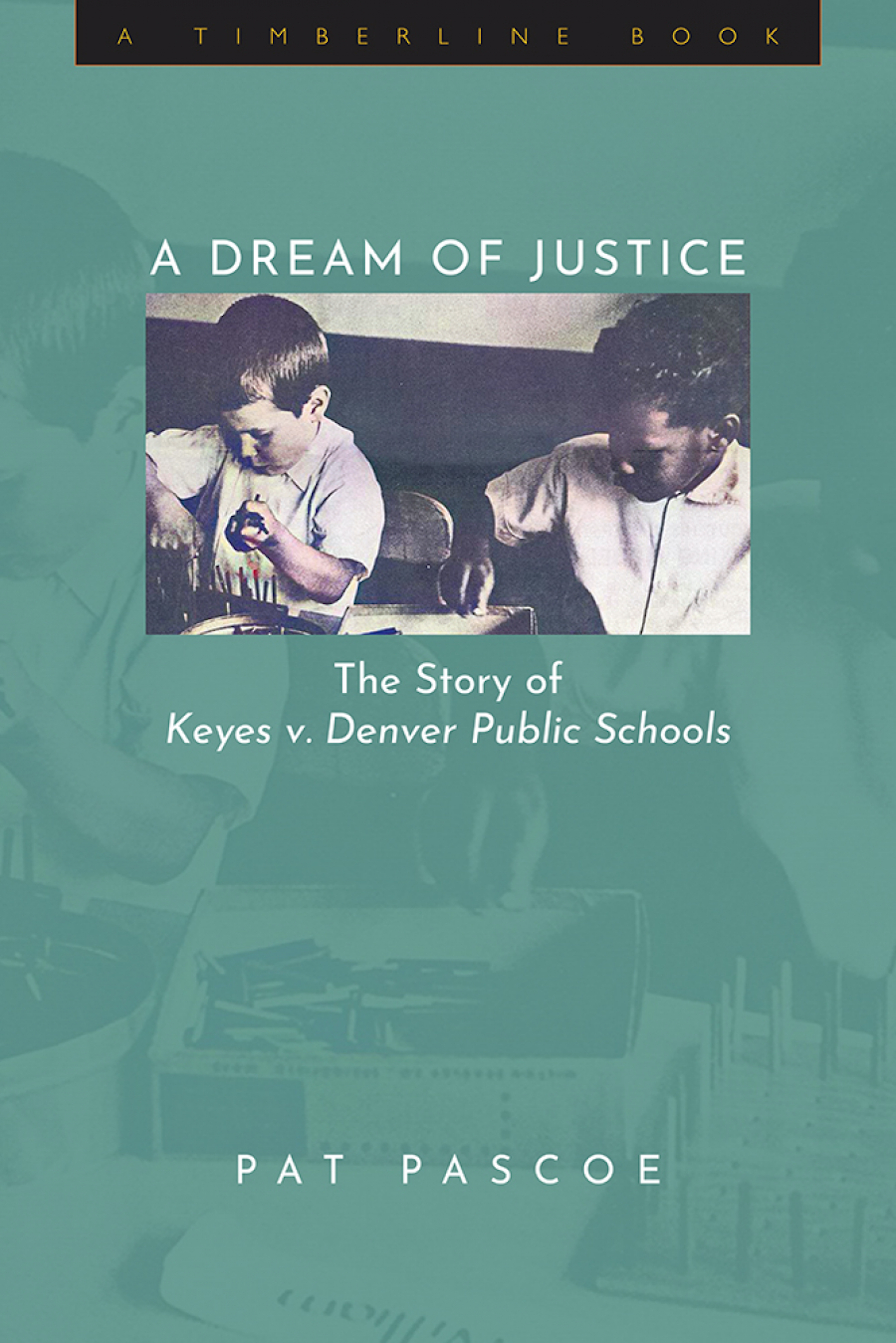Story
A Dream of Justice
A review of the 2022 book, A Dream of Justice: The Story of Keyes v Denver Public Schools, by Pat Pascoe.
Editor's note: This review comes to you from the Colorado Book Review. More reviews can be found at the Denver Public Library.
Pat Pascoe writes of the more than twenty-year period when the Denver Public Schools were challenged to cease keeping Blacks from entering white schools. This fight went all the way to the Supreme Court of the United States in Keyes v. School District No. 1. If you lived in Denver during the late 1970s, the 1980s, and the first half of the 1990s, you would remember the yellow buses on the streets seemingly all day. For some students and parents, busing lasted their whole Denver Public School (DPS) experience.
Pat Pascoe, a former state senator, English professor, and integration activist, covers both sides of the issue of school assignments with arguments of supporters and opponents by names and quotes. Schools were the focus of Denver’s integration effort because attendance boundaries could be and were adjusted to encourage or prevent Black attendance.
Liberals from across Denver, but especially those living in liberal Park Hill, the northeast part of Denver, were ready to end racial prejudice. This followed the violence in 1963 when Medgar Evers, field secretary for the National Association for the Advancement of Colored People (NAACP) was killed, followed by the killing of four Black girls at the Sixteenth Street Baptist Church in Birmingham, Alabama, followed by the assassinations of President John Kennedy, who advocated for civil rights, and later of Martin Luther King Jr.
Pro-integration advocates reasoned at the time that prejudice could be prevented if children experienced integration at a young age. To promote this idea, attorneys Monte Pascoe and Edgar Benton ran for the DPS school board in 1969 unsuccessfully. Pat Pascoe, Monte Pascoe’s widow, made this book a loving tribute.
The Denver Public School board acted overtly to continue segregating the schools by rescinding a motion requiring integration that had been proposed by Black DPS school board member Rachel Noel. To give their own children the exposure they championed, the Pascoes sent their children to kindergarten at Hallett Elementary School, in a Black neighborhood which had open enrollment for the purpose of integration. This magnet school was one of a few that the DPS board made available to answer the call for integration. In anticipation of districtwide integration, the Pascoes returned their children to their neighborhood school, which was mostly white, following kindergarten.
Pat Pascoe served on the Community Education Council charged with overseeing and reporting to United States District Court Judge William Doyle on how his desegregation order was working. At the same time, I was serving on the Denver Board of Education. I had waited until our children had graduated from DPS to run for and win a term on the Board of Education. Although I visited every school while on the board, my perspective was different from Pat Pascoe’s, and reading this book has given me another view of the court order.
It should be noted that the arguments in court never suggested that a Black student could not learn unless seated by a white student. Rather, the issue was equal access to up-to-date materials, experienced teachers, advanced classes, and physical resources that allowed all students to have a gym, a music room, and a designated library. The Board of Education assigned some students to schools that used mobile classrooms to accommodate a growing student body rather than transfer students to a school of varied races.
Pascoe’s review of a changing cast of lawyers, superintendents, and proposals put before the court reveals why all of this took over twenty years. What we have learned subsequently is that desegregation is not integration, since buildings could have a significant mixture of races, but students could often be segregated within the school by identifying some as college bound and others as needing a less demanding curriculum.
A more predictable range of integrated activities were sports, student council, and drama. These opportunities might not have been available at all if the schools themselves were not under court order to integrate. Our own older daughter, like the Pascoe children, also went to a mixed kindergarten at Hallett. She started first grade there but was transferred midyear by DPS because she was white and was needed at Philips to help meet racial balance there. Philips was one block from our house.
For middle school, our daughters went to Smiley and for high school they went to Manual, which was notably integrated. Our younger daughter was Head Girl two years before Michael Hancock, Denver’s current mayor, who is Black, became Head Boy. I recently asked her about her experiences at Manual. She said that her solid courses were mostly segregated but she added, very animatedly, that she loved being at Manual. Both daughters said the experience there made them comfortable in settings with mixed races. What I cannot speak to is if this was a positive experience for Blacks, especially if they were one of very few minorities in a college prep track and were sometimes separated from friends.
This thoroughly researched book should be read by anyone interested in the history of desegregation as experienced in Denver.

